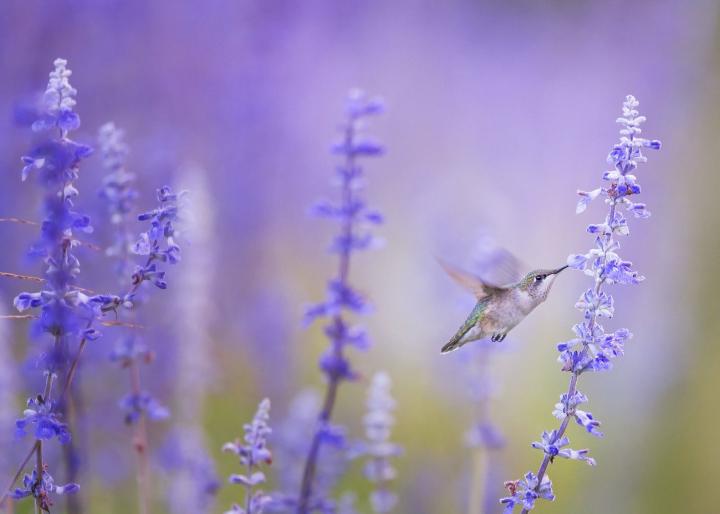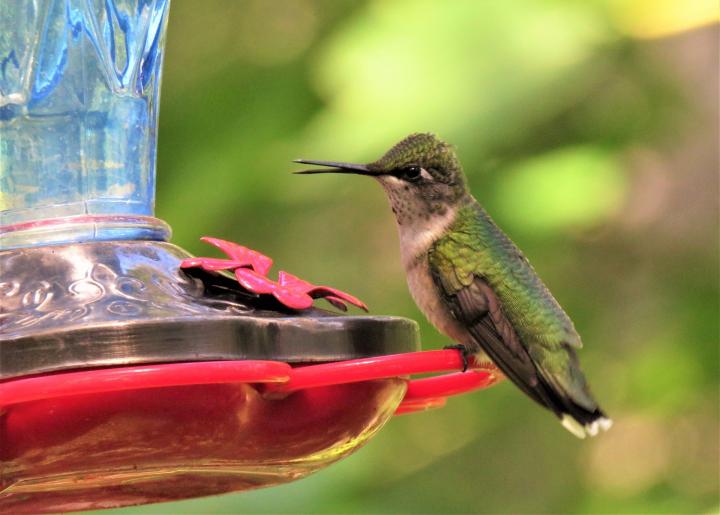Primary Image

Caption
Attract hummingbirds with this list of plants that they’ll find delicious.
What Are the Best Plants for Hummingbirds?
I discovered last summer that the flowers on my red cypress vine were definitely hummingbird magnets. This delicate vine with its fern-like foliage is known around here as "hummingbird vine," but calling it that confuses it with the trumpet vine, which is very invasive here and is a much bigger vine.
The hummingbirds seem to like my Japanese pieris. The shrub is in front of a window and I sit and watch them feed or rest on a branch. I put a feeder on that window ledge in colder months and I swear they look at me through the window and give me the stink-eye when it's empty.
We have a perennial bush in Florida that is a hummingbird magnet. Once established it is really easy to grow. It is sad that this bush is not on this list. Although, I am not surprised because apparently it is only grown in warmer climates. It is the Hamelin Patens or firebush. There is a compactum and a full size one. They start flowering in spring and will flower until we have frost (usually not before November). If there is a cold hard winter the bushes will die back and start anew when the weather warms up. Because they are fast growers it isn't long before you begin having flowers again. It would be really nice if word of this were more commonly known because I have personally seen how glorious these bushes are and also the number of hummingbirds it attracts. I have moved to North Florida and can assure you that it grows beautifully here. Please consider adding this plant to your list. It truly is amazing and attracts both hummingbirds and butterflies.
A lot of cold climate plants on this list. Given the author is from Indiana and they have really cold winters, that is expected. Cannas and certain Crinum lilies are great hummingbird attractors. Here in North Carolina, I have even seen them on our banana trees. Not often though as the bumblebees and yellow jackets seem to hog those flowers.
I would love to be able to read the articles and comments without a million ads popping up! You can’t even read ads and comments without it changing your spot. It took me 5 minutes to read a 1 minute article.
Well, the Internet can be hard, but even harder when you're stupid, Karen.
It's you and your computer, not the site.
You need to change your name or your attitude. Definitely not kneeling before God with your remarks
Why so rude and hateful? Many people are not tech savvy. Instead of judgy comments why not teach ? And, live up to your user name too
I wish you would encourage native plants for everyone. So much better for the birds and the bees-all pollinators. Do an article about each regions of the country and what their native plants are for the Hummingbirds etc.
We have ruby throated hummingbirds that visit us every year. They usually arrive mid May and stay until mid Sepember. They are the highlight of my year. I enjoy watching them. I feed them with sugar water and I change the water every two days or every day in the extreme heat. I clean my feeders thoroughly. I think this year I will put two feeders out but spaced apart so I can attract more birds.i also plant flowers that attract the birds and have colorful patio planters that they love. I make sure the feeder is protected and as safe as possible for the birds. It is a commitment but I just love the hummers!
- « Previous
- 1
- 2
- …
- 10
- Next »










Comments